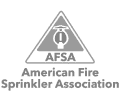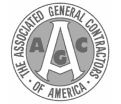How Big Should My Fire Extinguisher Be?
Are you shopping for fire extinguishers for your Houston-area business? You may be surprised to find that one size doesn’t fit all. In fact, there are many different fire extinguisher sizes, weights, types, and extinguishing agents available. Use the information here to help you determine how big your fire extinguisher should be.
Understanding Fire Extinguisher Sizes
You can determine the firefighting capabilities of a fire extinguisher by reading its label. For instance, if you’re looking for an ABC multi-purpose fire extinguisher—the most common type in use today—you might see 2A:10B:C on the label. This is a standard 5-lb extinguisher appropriate for use in most ordinary commercial settings, but canisters can be much larger than this. Here’s what the label means:
- Class A size rating: The number beside the letter A ranges from 1 to 40. This is the water equivalency for this extinguisher, where 1 equals 1¼ gallons. Therefore, a 2A size rating means the extinguisher can battle as fire as effectively as 2½ gallons of water.
- Class B size rating: The number beside the letter B ranges from 1 to 640. This tells you the square footage the extinguisher is rated to handle. Therefore, a 10B size rating means the extinguisher can effectively fight a fire that has spread up to 10 square feet.
- There is no Class C size rating: The C classification simply means the canister contains a non- conducting extinguishing agent, making it safe to use on electrical fires. Therefore, the Class A and Class B size ratings tell you everything you need to know about the firefighting capabilities of an ABC fire extinguisher.
Deciding How Big Your Fire Extinguisher Should Be
With an understanding of how to read a fire extinguisher label, now you must determine what size is best for your business. Here are the factors to consider:
- The size of the room: Walls and doors are natural deterrents that help slow the spread of fire, so heed the Class B size rating when choosing an extinguisher for an individual room in your building. A standard 2A:10B:C extinguisher should be sufficient for an average-sized room with no significant hazards. However, a larger warehouse space may need a 4A:60B:C or 10A:80B:C extinguisher to cover the larger area.
- The speed at which a fire could spread: Even the smallest fire extinguishers are effective if you employ them quickly after a fire ignites. However, some rooms encourage the flames to spread faster than others, such as a manufacturing facility with sawdust and other flammable debris on the floor. In short, if a fire is likely to spread quickly, you need a larger fire extinguisher.
- The physical capabilities of your employees: Extinguishers with greater firefighting capabilities contain more extinguishing agent, making them larger and heavier. This is why you can’t simply purchase the largest possible extinguishers for every room in your business. For your consideration, a 2A:10B:C canister weighs 5 lbs; a 4A:60B:C canister weighs 10 lbs; and a 10A:80B:C canister weighs 20 lbs.
TYPES OF FIRES & FIRE EXTINGUISHERS
Portable fire extinguishers are classified by the type of fire they’re designed to put out. There are five basic classifications, each labeled with either a letter-shaped symbol or picture.
CLASS A
Designed for use on ordinary combustible fires, Class A fire extinguishers safely put out fires fueled by materials like paper, wood, cloth, rubber, and many plastics.
Because there are several ways you can extinguish a Class A fire, there are various Class A fire extinguishers available, with some using a clean agent and others a water mist to suffocate and cool fires.
CLASS B
A Class B fire involves flammable and combustible liquids like gasoline, oil, lacquers, alcohol, and grease.
Most Class B portable fire extinguishers safely suppress these fires using carbon dioxide or clean agents that suffocate and extinguish the flames. Class B extinguishers that use clean agents are a preferred option, as they don’t leave a residue or need cleanup.
When extinguishing a fire involving flammable gas, it’s critical to shut off the fuel source promptly. Otherwise, unburned gas can escape into the atmosphere and cause an explosion if exposed to an ignition source.
CLASS C
Class C fires involve energized electrical equipment. Like Class B models, most Class C portable fire extinguishers rely on carbon dioxide or another clean agent to suffocate the flames.
CLASS D
Class D fire extinguishers are needed when a fire involves combustible metals like titanium, magnesium, and sodium.
Because common extinguishing agents can react with a combustible metal fire and cause it to spread, most Class D fire extinguishers use a dry powder agent to suppress the fire and absorb heat.
CLASS K
Class K fires involve cooking appliances that use animal or vegetable oils or fats. Class K fire extinguishers typically employ a wet chemical agent made with potassium to cool and suppress a kitchen fire simultaneously.
MULTIPURPOSE FIRE EXTINGUISHERS
It’s also good to know that multipurpose fire extinguishers are electrically nonconductive and use a special chemical to smother fires.
For instance, multipurpose dry chemical or ABC fire extinguishers are safe for Class A, Class B, and Class C fires.
Get Help Choosing Fire Extinguishers for Your Houston Business
With the information here, you can make an informed decision about how big your fire extinguishers should be. Still, you might second-gueta-cke-saved-href=”https://www.kauffmanco.net/fire-extinguishers/sales”>buy the right extinguishers for their building type and fire protection requirements.ss yourself if you have limited knowledge about fire codes. To ensure you select an appropriate fire extinguisher type and size, turn to Kauffman Co. for help. We are experts at helping our customers When you’re ready to shop for fire extinguishers in Houston, please call Kauffman Co. at (713) 893-1090 or contact us online for the expert assistance you need.















